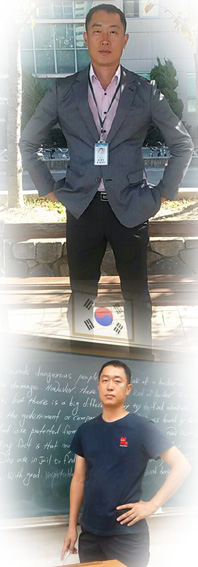2010년 수능 외국어 영역 28번 정답 및 해설 - 송곡닷컴(songgok.com)
28. 다음 글의 빈칸에 들어갈 말로 가장 적절한 것을 고르시오.
Not all authors trusted that the theater audience would automatically understand their plays in the intended manner. Thus, they repeatedly attempted to make it clear to their public that visiting the theater was not merely for the purpose of entertainment, but rather to draw lessons from the play offered onstage. It was, therefore, important for the viewer so as to facilitate interpretation of the content. This idea was developed by Bertolt Brecht with his ‘epic theater,’ which used alienation as a strategy to prevent the identification of the public with the figures of the drama. Through scattered narration and commentary throughout the play, for example, the viewers are invited to take a step back from the performance. In this way, they are given hints to better understand the play while the conclusion is left open so as to leave them to draw their own conclusions. [3점.]
① to imitate the actor’ performance
② to learn about the play beforehand
③ to identify himself with the actors on the stage
④ to bridge the gap between himself and the actors
⑤ to create a distance from the actions on the stage
1. 내용풀이
epic theater라는 개념을 설명하는 글로서, 빈칸 뒤에 나오는 alienation ~ to prevent the identification of the public with the figures of the drama라는 부분과 take a step back from the performance라는 부분을 통해 관객들을 무대 위의 연기로부터 거리를 두게 하는 것(to create a distance from the actions on the stage)이 주요 내용임을 알 수 있다.
① 배우의 연기를 모방하는 것 ② 극에 대해서 미리 학습하는 것 ③ 자기 자신을 무대의 배우들과 일체화시키는 것 ④ 자기 자신과 배우들 사이의 간격을 메우는 것
2. 구문해설
① Not all authors trusted that the theater audience would automatically understand their plays in the intended manner. ※ not all:부분부정 ※ intended manner:의도된 방식
→ 모든 작가들이 극장의 청중들은 저절로 자신들의 극을 의도된 방식으로 이해할 거라고 믿지는 않았다.
② [Thus, they repeatedly attempted to make it clear (to their public) that visiting the theater was not merely for the purpose of entertainment, but rather to draw lessons from the play (which was) offered onstage. ]
※ make it clear (to their public) that : it은 가목적어, that~는 진목적어 ※not merely ~ but (also) = not only ~ but also = as well as: ~뿐만 아니라~ (주의: not ~but 구문이 아님)
→ 따라서 그들은 일반 대중들에게 극장에 가는 것은 단지 즐기기 위한 목적뿐만 아니라 무대에 상연되고 있는 극으로부터 교훈을 얻어내는 것임을 분명히 하려고 반복적으로 시도했다.
③ [It was, therefore, important for the viewer to create a distance from the actions on the stage so as to facilitate interpretation of the content.] ※ it ~ for ~ to구문(가주어, 의미상의 주어, 진주어) ※so as to:~하기 위하여 →그리하여 그 내용에 대한 이해를 쉽게 하기 위해 관객이 무대 위의 연기로부터 거리를 형성하는 것이 중요했다.
④ [This idea was developed by Bertolt Brecht with his ‘epic theater,’ which used alienation as a strategy to prevent the identification of the public with the figures of the drama.]
※ ,which(관계대명사 계속적 용법) = and it ※figure:인물 → 이러한 생각은 Bertolt Brecht의 ‘에픽 드라마’에 의해 발전되었는데, 그것은 전략적으로 격리를 이용하여 일반 대중들이 드라마의 인물들과 일체화되는 것을 못하게 했다.
⑤ [Through scattered narration and commentary throughout the play, for example, the viewers are invited to take a step back from the performance] ※take a step back:한걸음 물러서다. → 예를 들어, 극중 내내 이루어지는 산만한 이야기와 해설을 통해 관객들은 공연으로부터 한 걸음 물러서게 유도된다.
⑥ [In this way, they are given hints to better understand the play while the conclusion is left open so as to leave them to draw their own conclusions.] ※ the conclusion is left open: 결론이 개방된 상태로 남겨지다 ※so as to leave them to draw their own conclusions:나름대로의 결론을 이끌어 낼 수 있도록 → 이러한 방식으로 그들은 극을 더 잘 이해할 수 있도록 힌트를 부여받으면서, 결국 나름대로의 결론을 이끌어 낼 수 있도록 결론은 개방된 상태로 남겨지게 된다.
3.단어정리
*audience 청중 *automatically 저절로, 무의식적으로 *intended manner: 의도된 방식*not merely ~ , but (also)~ : ~뿐만 아리라 ~ *onstage 무대에서 *facilitate 쉽게 하다, 촉진하다 *interpretation 설명, 해설 *epic theater 에픽 드라마(서사적인 방식의 극) *alienation 격리, 멀리함 *strategy 전략 *identification 동일화, 일체화 *scattered 산만한 *narration 이야기 *commentary 해설 *so as to ~하기 위하여(in order to = so that ~may)
4. 전문해석
모든 작가들이 극장의 청중들은 저절로 자신들의 극을 의도된 방식으로 이해할 거라고 믿지는 않았다. 따라서 그들은 일반 대중들에게 극장에 가는 것은 단지 즐기기 위한 목적뿐만 아니라 무대에 상연되고 있는 극으로부터 교훈을 얻어내는 것임을 분명히 하려고 반복적으로 시도했다. 그리하여 그 내용에 대한 이해를 쉽게 하기 위해 관객이 무대 위의 연기로부터 거리를 형성하는 것이 중요했다. 이러한 생각은 Bertolt Brecht의 ‘에픽 드라마’에 의해 발전되었는데, 그것은 전략적으로 격리를 이용하여 일반 대중들이 드라마의 인물들과 일체화되는 것을 못하게 했다. 예를 들어, 극중 내내 이루어지는 산만한 이야기와 해설을 통해 관객들은 공연으로부터 한 걸음 물러서게 유도된다. 이러한 방식으로 그들은 극을 더 잘 이해할 수 있도록 힌트를 부여받으면서, 결국 나름대로의 결론을 이끌어 낼 수 있도록 결론은 개방된 상태로 남겨지게 된다.
.gif)


.gif)

